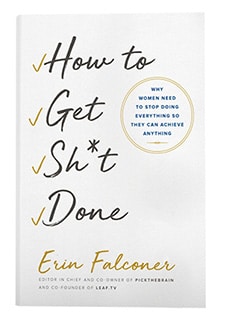You already know what needs to happen. You say it all the time: “I need to be more productive with my time.”
But often – too often – it feels just about impossible. Certain times of day you’re a steam train mowing down anything which gets in-between your work and you. Other hours, maybe when you’d rather be sleeping, the brainstorming commences – and doesn’t end. Then there are the dead hours – those hours where no matter how hard you try, you know you’ll find myself wasting as much time as possible, in whatever way makes itself available.
When what you’ve got is competing demands – whether that’s in your schedule or in your interests – feeling those ebbs and flows of energy can derail your productivity and your creative process. So what do you do about it?
1) Shift your mindset
Different hour = different possibilities. When you’re out of energy, you’re out of energy. And that can make itself known in distraction or procrastination. It’s not that you are wasting time, or aren’t committed to what you’re doing – it’s that you can’t really do any better given your energy levels. When you’re focused and able to get a lot done – don’t ignore that impulse to keep going, but pay attention to it, and take note. If it’s a trend, it might be valuable to schedule any executive tasks for that time of day. And when your brain goes into brainstorm mode, don’t let that phase you. That is your creativity working for you. Grab a notebook or journal and let it – channel the energy towards any creative work you could be doing, instead of wasting it chastising yourself for not spending more time executing.
2) Understand Your Productivities
There’s an endless debate surrounding whether “early birds” or “night owls” are more productive. Odds are, you likely aren’t just one kind of productive (or one kind of bird, for that matter). Sometimes you brainstorm, plan, draft. Other times you edit, assemble, execute. Distinguish between these types of productivity – creative productivity through writing, brainstorming, planning, etc., and executive productivity through copying, revising, editing, etc. Where your energy lends itself to spending can differ by the time of day.
Once you understand that, know how you work – whether it’s in periodic bursts or over long, dedicated slogs, or somewhere in-between. Take the time to notice whether it works differently when you are writing creatively to when you are writing a report, or between planning and execution. And once you are clear on the different ways you can be productive, start to take notice of the times they coincide with.
3) Learn Your Hours
Test yourself. Over the span of about a week, chart out when you are the most creative, and when the muses won’t sing. Record when you get the most actual execution – the hands-on, make-the-creative-vision-happen work – accomplished. Finally, and most importantly, note down when you are the most likely to distract yourself or feel a slump in energy. Record the time of day, and whether it differs depending on other factors, like your diet or the day of the week or your sleep pattern. Understand the trend in your waking hours, and what you are and aren’t able to put out in the meantime.
Just understanding those hours – and working with them, rather than against them – can stave off a whole lot of frustration, procrastination and writer’s block.
4) Organize Your Time Around Those Hours
Rather than exhausting yourself by trying to push through those lapses in energy or focus, organize your schedule with those hours in mind. This might look like:
1. Creative work in the early morning/late night (6am – 10am; 8pm onwards)
2. Productive Work in the late morning through early afternoon (10am – 2pm)
3. “Useless” Netflix/Facebook/Catch up with an old friend hours (3pm – about 8pm)
The key is to guide yourself. To learn the unique ways in which your energy flows and lapses throughout the day, then taking note of the time of day those changes correspond to. Figuring it out – exactly how this looks for you – can make you that much more productive.
So if you’ve got a chapter to finish, a topic to revise, a blog post to write, or a whole lot of procrastinating to do – try testing yourself, and finding out when your creative juices are flowing, and when they aren’t. When it’s easy to focus, and when it isn’t. Try organizing your time around your energy – not the other way around – and see how it works for you.
Pedro is a person who sometimes writes things.
Erin shows overscheduled, overwhelmed women how to do less so that they can achieve more. Traditional productivity books—written by men—barely touch the tangle of cultural pressures that women feel when facing down a to-do list. How to Get Sh*t Done will teach you how to zero in on the three areas of your life where you want to excel, and then it will show you how to off-load, outsource, or just stop giving a damn about the rest.





generic viagra online for sale buy cheap viagra cheap generic viagra
595283 837072We guarantee authentic brands avoiding inferior commercial imitations, or even dangerous counterfeits. 427964
natural pills for ed generic cialis new ed drugs
vitality ed pills generic cialis generic viagra without a doctor prescription
cheap erectile dysfunction pills https://sildenafilxxl.com/ viagra canada
191855 69070Thank you a great deal for giving everyone an extraordinarily special possiblity to check ideas from here. 172470
30 day cialis trial offer cialis coupons printable how often to take 10mg cialis
에볼루션코리아
322EwJRdD%%^
에볼루션카지노
930OGmrsj,\[
에볼루션바카라
727ItOaWP&%`
에볼루션룰렛
365ZMFYqX;-(
에볼루션블랙잭225qHxDcA\@;